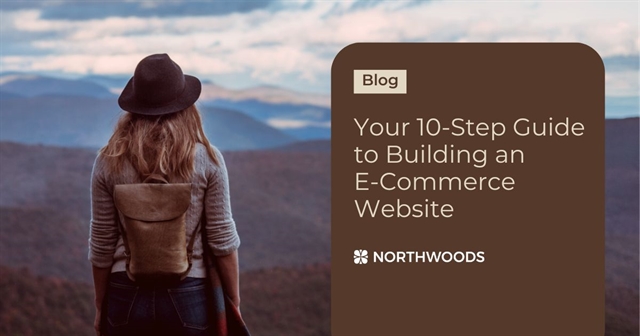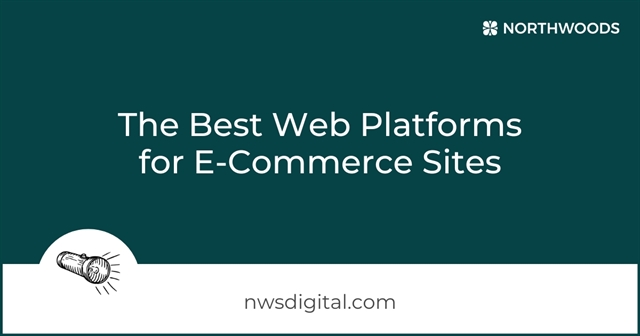By Katelyn Goerke
November 20, 2023
4 Minute Read
Updated: Nov. 20, 2023
Originally Published: Oct. 3, 2022
Brands that sell online can choose from many tools to help them reach their customers. Most marketers have already mastered online catalogs and carts, and they target shopping ads at defined cohorts of customers.
The next step? Social commerce.
It’s new, but it’s a trend, not a fad. Social commerce can be very powerful. If you sell online, it’s important to understand its capabilities and then determine whether this tactic is right for your business.
What Is Social Commerce?
Social commerce is selling products directly through a social media platform, instead of redirecting the user to a website to make a purchase. This saves users time and clicks and substantially lowers the barrier to purchase.
Intrigued? Great! But here are some things to keep in mind. First, you must already be selling online. Ideally, your product doesn't require many steps for purchase. For example, if you require customers to fill out a lengthy registration form, social commerce might not be the tactic for you.
Second, you need presence on a social platform that allows social commerce. Without that established presence, you’ll find it difficult to both grow an audience and then convince that newly formed audience to buy. It’s possible, but takes time and effort. Converting an established audience is far easier.
What Are the Benefits of Social Commerce?
The general benefit is a more seamless customer experience from interaction to purchase. Social commerce lowers the barriers of entry for those already in the market for your type of product in the following ways.
Fewer Clicks Needed to Purchase
Sending users from the social platform to your site can burden them with further browsing and searching, account creation or sign-in, information entry and – finally – purchase. These delays result in abandoned carts. Purchase is nearly immediate within the social media platform, where users are much less likely to be distracted or face technical difficulties.
Social commerce is most powerful on mobile – where cart abandonment is highest for e-commerce. Users face too much distraction when shopping on their phones. Distraction means delay, which is deadly to sellers. The streamlined checkout on social commerce makes customers more likely to stick around and complete the purchase.
Automatic Input of Saved information
Most social media platforms save previously input information and autofill it within the purchase process. So customers need not re-enter their names and addresses to purchase. They simply verify that the auto-entered information is correct. Then it’s right on to the next step.
Who Should Use Social Commerce?
Brands that already sell online and have established social media audiences should consider social commerce. Brands that lack those pieces face two barriers to entry.
Businesses that lack a social media presence can succeed with social commerce – if they have the money for social media advertising. Social commerce pairs neatly with targeted digital ads. Define the audience you would like to reach, tell your story in the advertisement, and include a call-to-action to purchase immediately. It’s that simple.
What Platforms Are Best for Social Commerce?
Facebook is the clear winner in the social commerce space, but it isn’t the only player.
Facebook & Instagram
Facebook is strongest in social commerce because it has created a great variety of tools for sellers. Facebook launched its social commerce tool, Facebook Shops, during the pandemic to help owners of small and medium-sized businesses connect more easily with their customers when store visits were impossible or risky. Facebook Shops remain free to set up.
Once you’ve set up the Facebook Shop on your business profile, you can add the shop tab to your page and begin promotion. Facebook has partnered with several e-commerce solutions to ease the loading of products into shops. If you prefer, you can bypass the supported solutions and upload products via spreadsheets.
Once you’ve set up your Facebook Shop, you can link it directly to Instagram Shopping and begin promotion on that channel, as well. You must meet a couple of requirements to get started. First, you must use an Instagram business account, something you should have set up by now, anyway. Second, that account must be linked to your Facebook business profile.
TikTok
Tiktok rolled out TikTok Shop in 2023, adding a new big player to the social ecommerce space. TikTok has always been a powerful space for influencer marketing. Even before adding TikTok Shop, according to Student Beans, 55% of TikTok users reported making a purchase after seeing a brand or product while using the app.
Adding the ability to purchase in the app is the next step for brands looking to get users to checkout quicker.
Other Social Media Channels
Facebook, Instagram, and TikTok have truly embraced social commerce, but other platforms aren’t far behind. With Pinterest’s Product Pins, businesses create and link product-specific landing pages to relevant content, to encourage easy purchase.
YouTube also promotes a Shop Now button within content.
Getting Started with Social Commerce
If your e-commerce is going well, now is the time to get started on social commerce. The low barrier to entry for both business and customers makes this an easy tactic to test. So, it’s a great time to find out if social commerce is right for your business!
If you need assistance with digital advertising or e-commerce, our expert digital marketing team can help! Contact us today.
Related Blog Posts

With the e-commerce industry anticipated to top $1 trillion in revenue and account for 20% of all U.S. retail sales in 2024, it's critical for e-commerce businesses to build effective, user-friendly websites. Get started with our 10-step guide!

We’ve broken down some of the most popular e-commerce tools by usability, scale, and technical capacity so you can make the best choice for your business.

A thoughtful, nuanced ad strategy will set your e-commerce business up for long-term success. Here are the key strategies you'll need to employ to increase your return on ad spend.